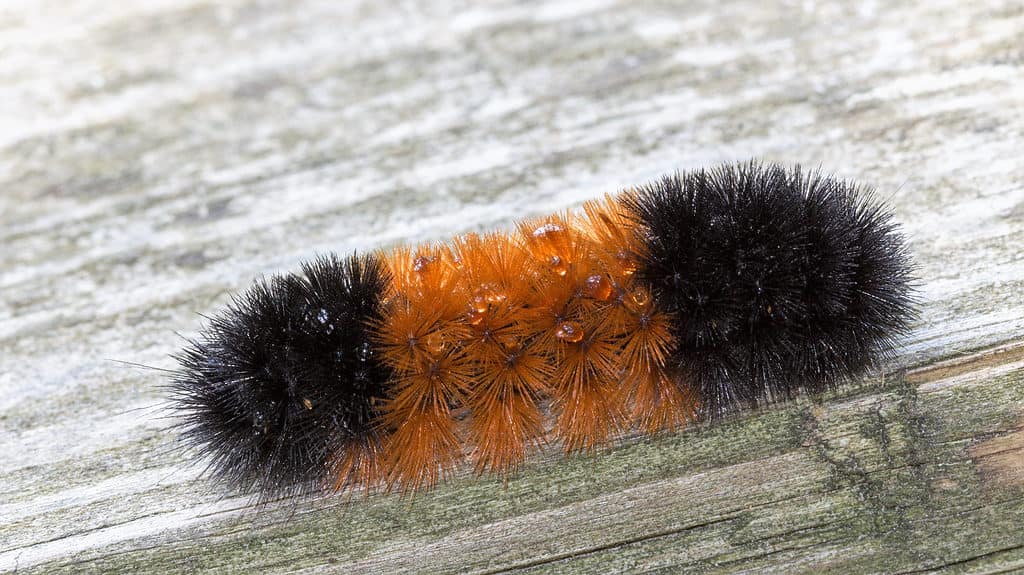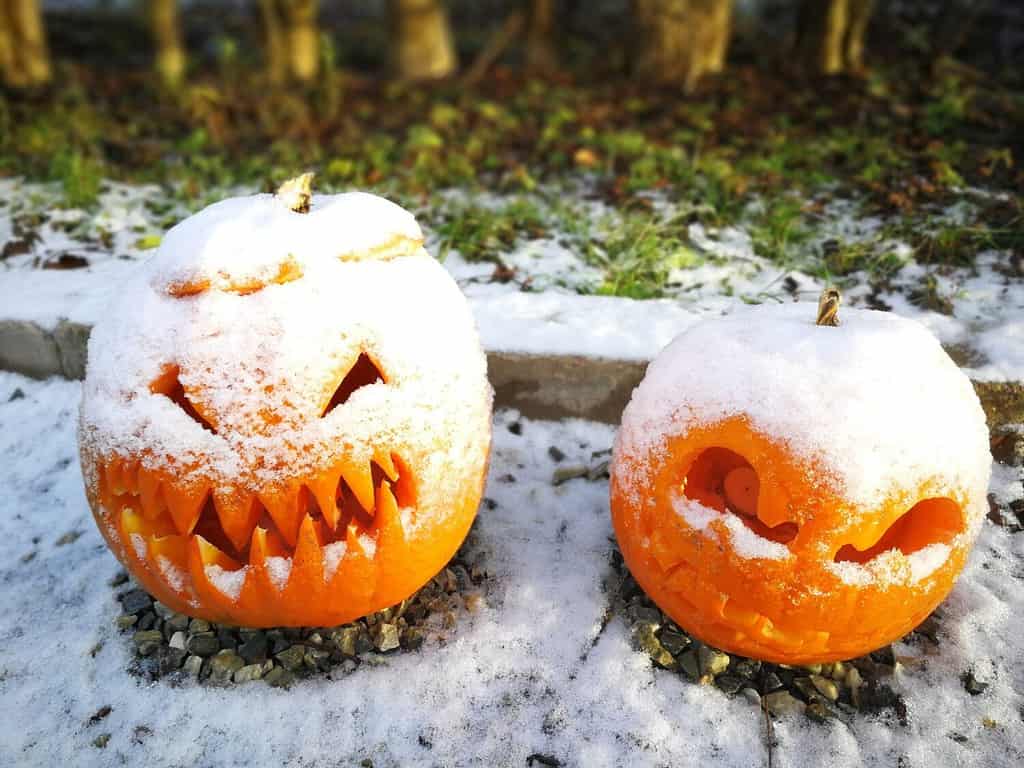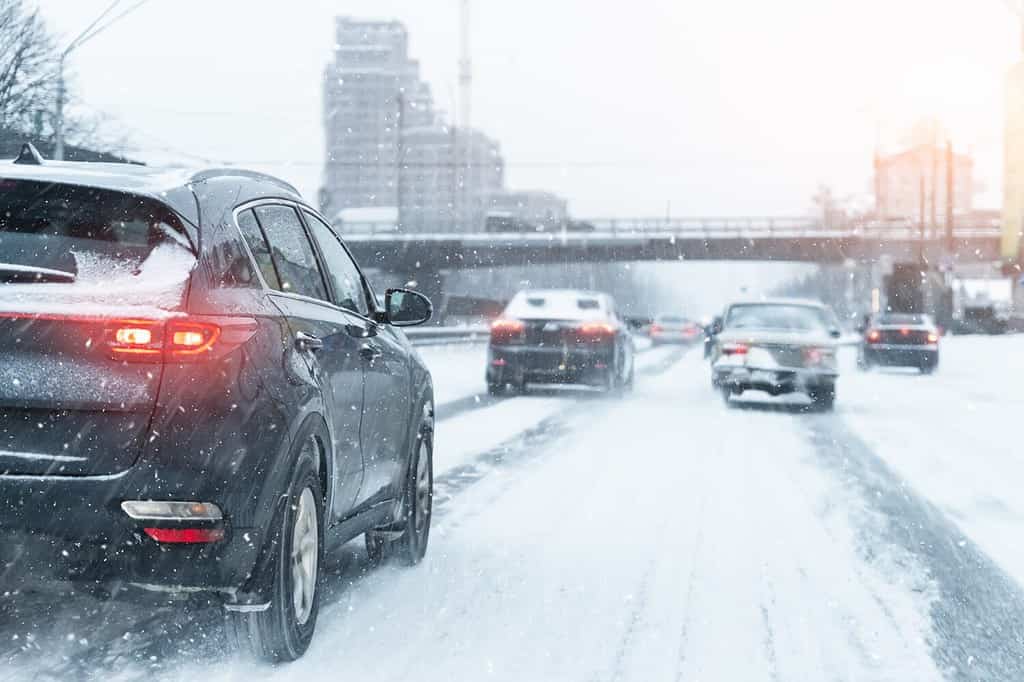Weather can be volatile in Illinois, and snow is not uncommon for October. According to local meteorologist Tom Skilling, the city of Chicago has received at least a trace amount of snow for about half of all of Octobers since 1884. However, significant winter storms are rare for the area this early in the year. Although unusual, early-season severe snowstorms do happen in Illinois. The biggest October snowfall for the state resulted in a very snowy Halloween in 2019.
Wildlife During the Storm

Cardinals look like little balls in the winter with their extra layer of fat and puffed-up feathers keeping them warm.
©iStock.com/Diane079F
Animals in Illinois are well prepared for winter snowstorms, so a Halloween surprise snowfall shouldn’t have been too much of a shock. Admittedly, it was a little earlier than usual for Illinois wildlife. Still, most animals would have already begun preparing for winter by this time.
Groundhogs hibernate during the coldest part of the year. Many migrating birds would have already left for warmer climes. The birds that stick around through winter, such as chickadees, sparrows, cardinals, and juncos, put on an extra layer of fat to withstand the cold. Chipmunks and squirrels also grow an extra layer of fat to keep them warm. Furthermore, they, along with beavers, spend the summer and fall storing food to get them through the winter. White-tail deer also bulk up before winter to add an extra layer of fat to get them through the cold months.
Woolly bear caterpillars and wood frogs can survive freezing without their bodies being damaged, while they thaw when the weather warms up. The caterpillars and wood frogs have a substance in their body tissues (glycerol) that acts as antifreeze.

The fuzzy woolly bear caterpillars survive freezing in cold Illinois winters with a substance in their blood that acts as an antifreeze.
©Kimberly Boyles/Shutterstock.com
Painted turtle hatchlings survive cold snaps by nesting near lakes and streams. The turtle’s thick skin helps keep them warm, while their blood can cool to very low temperatures without freezing.
Halloween Snowstorm of 2019

Trick-or-treaters in Illinois either braved the snow and cold or headed inside to indoor events on Halloween of 2019.
©norr/Shutterstock.com
Severe winter storms in Illinois typically hit the state between November through April, with January being the snowiest. However, in 2019, the snowy season began a little bit early. From October 29th to the 31st, multiple cold weather systems pummeled northern Illinois. These cold weather systems kept the temperatures low enough that the precipitation on Halloween Day was mostly snow.
In contrast, the first part of October was unusually warm for Illinois. The high on October 1st in Chicago was 82 degrees Fahrenheit. Southern Illinois felt the brunt of the heat, recording a rare 96-degree Fahrenheit high temperature on October 2nd. After the heat broke, the rest of the month brought mainly seasonable temperatures, that is, until the cold snap hit at the end of October.
Unseasonably cold temperatures combined with high winds resulted in frigid wind chills as low as the middle teens for some areas. The Chicago area received around 3 to 6 inches of snow, with the highest amounts north of the city at 7 inches. However, the record high snowfall for Illinois was recorded about two hours west of Chicago in the small town of Orangeville. Orangeville, located in Stephenson County, received a record high of 8.5 inches.
Early Season Snowstorm: Impacts in Illinois
Fortunately, the early winter storm wasn’t a surprise for the area. Local forecasts had begun warning of snow six days prior. Even so, farmers were delayed in harvesting their corn crops, schools across the area were closed, many Halloween festivities were canceled, and Chicago’s O’Hare and Midway airports reported significant flight delays. Many local park districts offered indoor events for little ones to keep them out of the frigid temps and snowy weather while trick-or-treating.

Morning commutes were slow in northern Illinois on the morning of Halloween 2019.
©Gorloff-KV/Shutterstock.com
The low temperatures combined with rain and snow made for icy road conditions and Chicago commuter train delays. The wet snow stuck to trees that hadn’t yet lost their leaves, causing branches to break and downing power lines. The high winds that accompanied this storm helped to blow some of the snow off the trees, reducing damage.
A Quick Rebound
The Halloween snowfall didn’t stick around for too long. Temperatures rebounded the next day to a state average of 41 degrees Fahrenheit. A few days later, the daytime high for the state reached 52 degrees Fahrenheit. Although, another winter storm system came through the area about two weeks later bringing another early snow event, though not nearly as much snow as the Halloween snowstorm.
The photo featured at the top of this post is © Ihor Martsenyuk/iStock via Getty Images
Thank you for reading! Have some feedback for us? Contact the AZ Animals editorial team.







